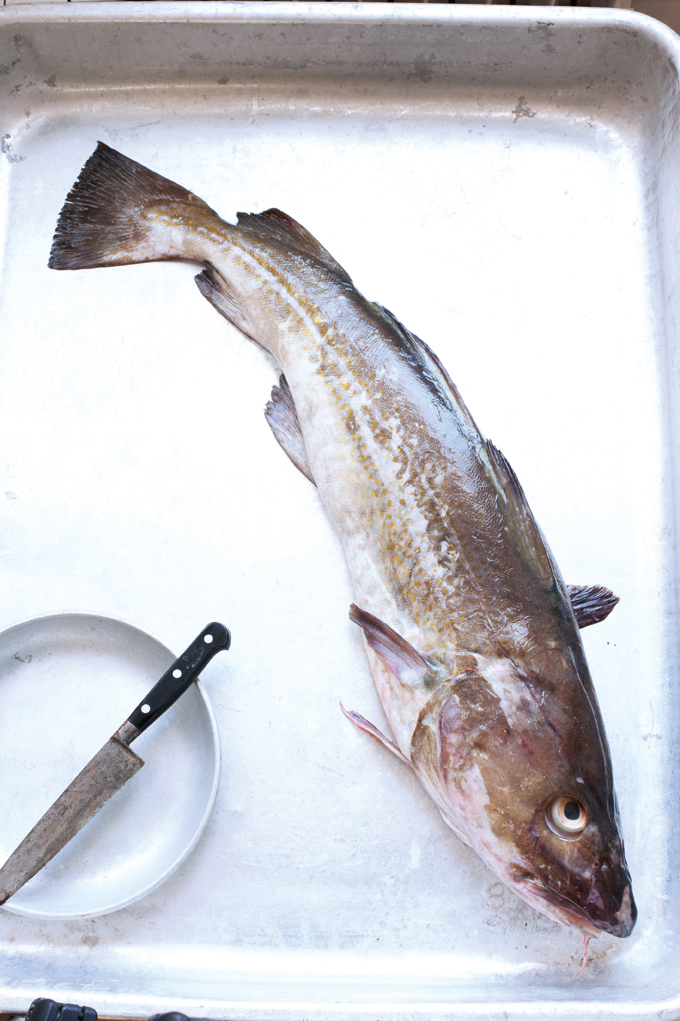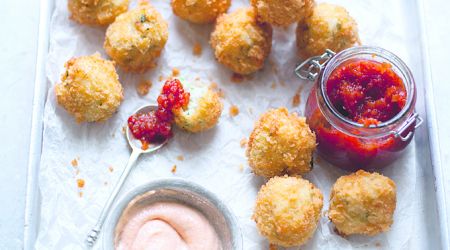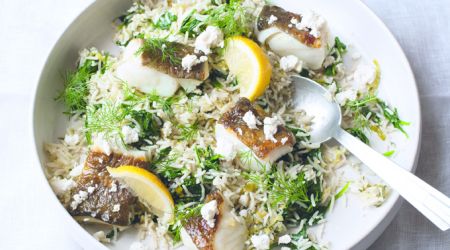Cod -
A success story of recent fishing management, cod stocks are happily on the rise. Clarissa Hyman finds myriad ways to enjoy the fish outside of the everyman favourite, with batter and chips
Years ago, so family legend has it, my mother was watching a TV cookery programme. The celebrity chef (who shall remain nameless) finished his fish dish with a flourish of blobs, drizzles and colourful smears. Mum snorted and uttered the legendary line, ‘All that farting about for a bit of bloody cod’.
She was essentially not wrong to query why such an outstanding fish should need such fancy-shmancy treatment, though I’m not sure she meant it that way. It is indeed a common mistake to dismiss Gadus morhua as ‘ordinary’, no more than a chip- shop staple that needs gussying up in order to merit its place in the fish hall of fame. Familiarity, however, should not breed contempt: cod has history, class and a large extended family on its side.
Cod is one of the main cold-water species of the North Atlantic and there was once a thriving cod fishing port on the Thames estuary. Fish were landed in boats called ‘well smacks’, designed to keep the fish alive until they were offloaded and stored in wooden tanks or ‘cod chests’ in the river until ready to be sent to market. The advent of the railways and refrigeration signalled the end of the port as the trade moved to northern towns closer to the fishing grounds.
Cod fishing has been through mass destruction. The cod wars between the UK and Iceland over fishing rights lasted more than 20 years. In the 1990s, over-fishing practically wiped out Newfoundland stocks, and their recovery remains slow and fragile. Over-fishing also caused a crisis around Europe, but a long-term management plan has improved the supply of Atlantic cod with several fisheries now certified as sustainable by the Marine Stewardship Council (MSC). North Pacific cod, another member of the family, is reportedly well-managed with healthy stocks and two of their fisheries have also been certified by the MSC (look for the blue tick logo on the packaging).
Skrei, a particularly fine type of cod, is caught as it migrates in an epic journey from the Barents Sea to the traditional spawning grounds near Norway. Larger than coastal cod and with a chunky consistency and glorious flavour, it is an exceptional culinary treat. Their season runs from January to April.
Cod can weigh up to 40kg, although this is very rare, and the average weight today is around 5-12kg. In the US, cod are classified by size and called scrod if below 50cm, a term that sometimes bemuses UK visitors. Historian Alan Davidson describes how an old Irish fishery pamphlet gloriously compared the colours of the sleek, streamlined cod to that of Connemara marble, and he also passes on a nice if implausible tale of how the scrod got its name: Parker House, a famous old restaurant in Boston, always boasted of having the freshest fish but never knew which this would be on any given day, so the manager invented the word as a catch-all name.
Cod lends itself to most ways of cooking, but whether you fry, poach, steam or bake the fish, it should be really fresh. Old cod is dull cod. There are many recipes to explore, from Polish cod baked in sour cream to Danish cod poached with butter and mustard and Galway codling (small cod) with mussels or cockles, but another necessity is to avoid over-cooking the fish: the flakes should be firm but tender, moist and snow-white. The Norwegians are probably the world leaders in dealing with cod, which they have fished for centuries. Cod roe is a particular delicacy there, as is cod liver (although the words ‘cod liver oil’ still strike fear into the hearts of a certain generation of baby boomers).
Deliciously succulent cod cheeks are now a thing, as are the throat muscles aka the ‘tongues’ – something the Spanish and Portuguese could have told us years ago. The Elephant’s Head in Hackney, for example, is now serving crispy cod cheeks with chips, crushed peas and tartare sauce (£12), although it might be a while before Shetland Crappin (or Crappit) Heid is offered in the metropolis – cod’s head stuffed with a mixture of fish liver and oatmeal. The detailed instructions offered by Davidson includes the tip to ‘prise and hold the mouth open with a wooden spoon (not your fingers, because of the teeth) and stuff the liver mixture down)’ – at which point, I lost the will to live.
The cod lends itself well to preservation by drying, salting or both. It gave the Vikings provisions for their voyages and conquests. The numerous fast days of medieval Europe increased the demand and created a widespread taste for salt cod. However, the Nordic success inspired competitors and they lost their monopoly to the Bretons and Basques. The latter were whalers who followed their prey to Newfoundland, where they discovered tremendous quantities of cod. Cape Cod was, of course, named for the fish, and an effigy of the Sacred Cod hangs in the State House. Cod also played a part in the slave trade: in Africa, slaves were paid in Spanish coins, rum or a quantity of salt cod. Salt cod was also bartered for molasses from the West Indies, which, in turn, was used to make New England rum.
My mother used to fry cod in matzo meal or poach it with potatoes in a creamy broth. Both so very delicious. But, then, she had cod on her side.

Recipes
Get Premium access to all the latest content online
Subscribe and view full print editions online... Subscribe




